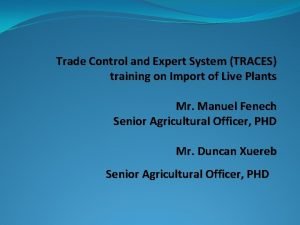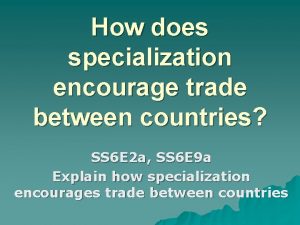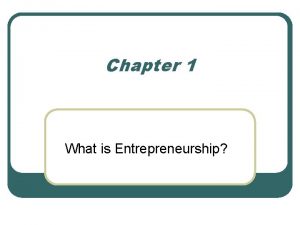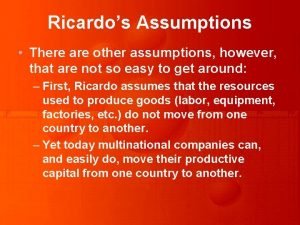Other Assumptions two countries two factors two products







- Slides: 7

Other Assumptions: • • • two countries, two factors, two products; perfect competition in all markets; Free trade; Factors of production are available in fixed amounts in each country; Full mobility of factors of production between industries within each country; Immobility of factors of production between countries; The two countries are alike with respect to tastes; Technology is available to both countries; and Linear homogeneous production functions of degree one (constant returns to scale).

The Heckscher-Ohlin Theorem Critical Assumptions: • Countries are characterized by different factor endowments--a country is capital abundant if it has a higher ratio of capital to other factors than does its trading partner; • There are different factor intensities between products--a product is capital-intensive if, at identical wages and rents, its production requires more capital per worker than does the other product.

The H-O Theorem • Given identical production functions but different factor endowments between countries, a country will tend to export the commodity which is relatively intensive in her relatively abundant factor • In general, countries tend to have comparative advantage in the products that are relatively intensive in their relatively abundant factors

Example Consider the following data on the factor endowments of Brazil and Poland. Also, Suppose that steel is capital intensive relative to textile. If trade opens between Brazil and Poland, what would be the direction of trade? Factor Endowments Labor Force Capital Brazil Poland 45, 000 20, 000 15, 000 10, 000

The Factor Price Equalization Theorem Assumptions: • there are two countries using two factors of production producing two products; • competition prevails in all markets; • each factor supply is fixed, and there is no migration between countries; • each factor is fully employed in each country with or without trade; • there are no transportation or information costs; • free trade; • production functions exhibit constant returns to scale, and are the same between countries for any industry; • production functions are not subject to factor intensity reversals; and • both countries produce both products with or without trade.

The Factor Price Equalization Theorem • Free trade will equalize not only commodity prices but also factor prices, so that all workers earn the same wage rate and all units of capital will earn the same rental return in both countries regardless of the factor supplies or the demand patterns in the two countries

Hourly Pay in Manufacturing Before Correction for Differences in Labor Productivity
 Traces control and expert system
Traces control and expert system Does specialization encourage trade with other countries?
Does specialization encourage trade with other countries? In what country would you find a pinata on christmas
In what country would you find a pinata on christmas Fisher's functional vs innovative products
Fisher's functional vs innovative products Pepsi marketing mix
Pepsi marketing mix Generates fresh produce and other farm products
Generates fresh produce and other farm products Generates fresh produce and other farm products
Generates fresh produce and other farm products Generates fresh produce and other farm products
Generates fresh produce and other farm products













